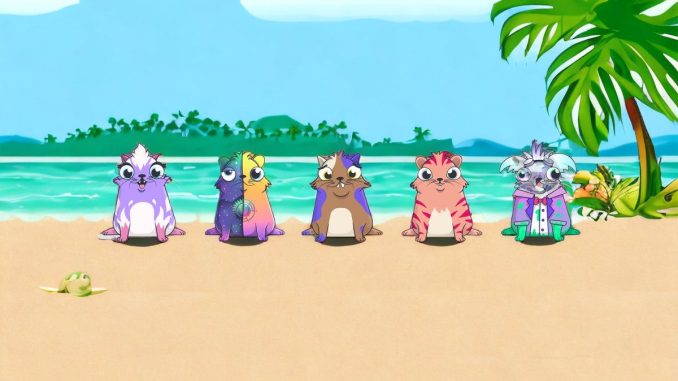
The story of CryptoKitties began in 2017 with a group of passionate developers at Axiom Zen, a Canadian startup studio. It was intended to be a playful experiment of early stage blockchain technology.
The creators were Inspired by the Tamagotchi craze of the 90s and they envisioned a game where players could own, breed, and trade virtual cats.
These virtual cats possessed various traits, from fur patterns and eye color to body shape and accessories. The game’s premise was simple yet captivating.
Players could purchase CryptoKitties, each represented by a unique non-fungible token (NFT), a digital certificate of ownership that ensured the cat’s authenticity and scarcity.
By early December 2017, CryptoKitties had turned viral sensation, sending prices for some kittens well into the six figures.
Genesis, the first high selling cat was sold for $117,000 in December 2017.
On May 12, 2018, a CryptoKitty was sold for $140,000 and iaunched their first celebrity-branded CryptoKitty with Stephen Curry. However, it didn’t turn out well due to legal complications.
On September 2018, a CryptoKitty named Dragon sold for $170,000.
A month later, CryptoKitties reached the milestone of 1 million cats being bred with a volume of 3.2 million transactions on its smart contracts.
The highest recorded sale for a CryptoKitty was approximately $800,000 in September 2021. The game drove the early success of Ethereum. However, CryptoKitties became so big that it caused a congestion in the Ethereum network and at one point, it accounted for about 25% of the network traffic.
This led to the creation of Flow blockchain, an adaptable, high-speed blockchain platform designed for collectable NFTs, which gave birth to NBA Top Shot.
“NFTs are a new paradigm of ownership in the digital world.” said Roham Gharegozlou, cofounder of Axiom Zen, the creator behind CryptoKitties.
In case you didn’t know, CryptoKitties was among the first projects to harness smart contracts by attaching code to data constructs called tokens, on the Ethereum blockchain.
The popularity raised considerable awareness about NFTs. This led to more than $27 million investment at the time from VC firms like a16z, Google Ventures, Union Square Ventures, and Venrock.
CryptoKitties popularized NFTs and paved the way for a surge of NFT-based projects like Bored Ape Yacht Club, Doodles, and Axie Infinity transforming the way people interact with and own digital items.
“Before CryptoKitties, if you were to say ‘blockchain,’ everyone would have assumed you’re talking about cryptocurrency,” said Bryce Bladon, a founding member.
“What I’m proudest of is that it was something genuinely novel. There was real technical innovation, and seemingly, a real culture impact.”


